Table of Contents (click to expand)
An air conditioner in a room or a car works by absorbing hot air from a particular room, processing it into itself with the help of a refrigerant and a series of coils, and then releasing cool air into the same room where the hot air was originally collected.
This processing is mainly carried out via five components:
- Evaporator
- Compressor
- Condenser
- Expansion valve
- Refrigerants
Imagine being outside in the sweltering heat of a particularly hot summer day, doing godforsaken errands that can no longer be postponed. The heat is so unbearable that it feels like the hottest day on earth since the dawn of civilization. But one thing keeps you on your toes: the knowledge that you will be in your air-conditioned house in an hour.
The time has finally come: you open the door and enter your house. A gust of cooled air envelops every cell of your body and you immediately feel better.

I am sure that you have all had this experience at least once in your life: the “cooling revolution” that air conditioners have brought into human society can never be discounted; though previous generations had fans and other ways to keep cool on hot days, they have never been as astonishingly effective as modern air conditioners in terms of sheer cooling capacity.
In this article we will talk about air conditioners and what they do – and how they do it – which makes them almost a necessity in urban areas.
Parts Of An AC
There are two main types of air conditioning systems: window systems and split systems, which are further divided into mini-split and central systems. In everyday language, these are commonly referred to as window ACs or split ACs.
Regardless of the type of installation, all air conditioners consist of four main components, which are listed below:
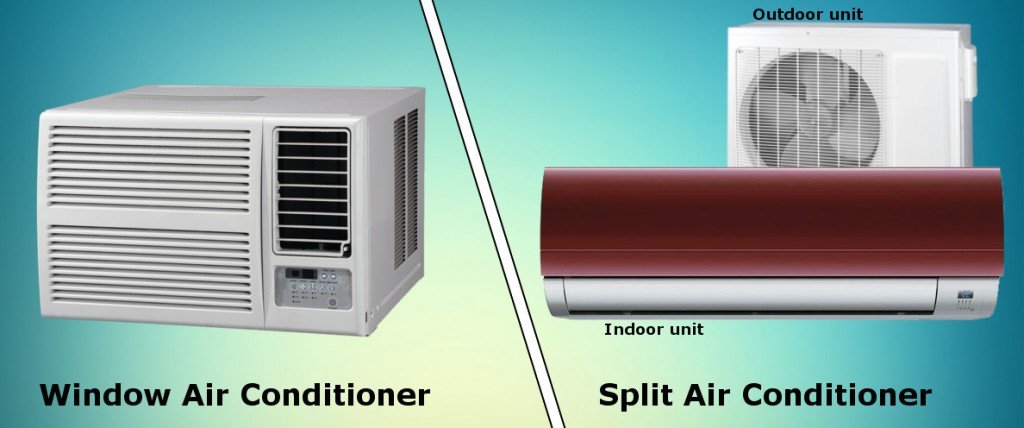
Evaporator
An evaporator is basically a heat exchanger coil that is responsible for collecting heat from the interior of a room by means of a refrigerating gas. This component is called an evaporator and is where the liquid refrigerant absorbs heat and evaporates into a gas.
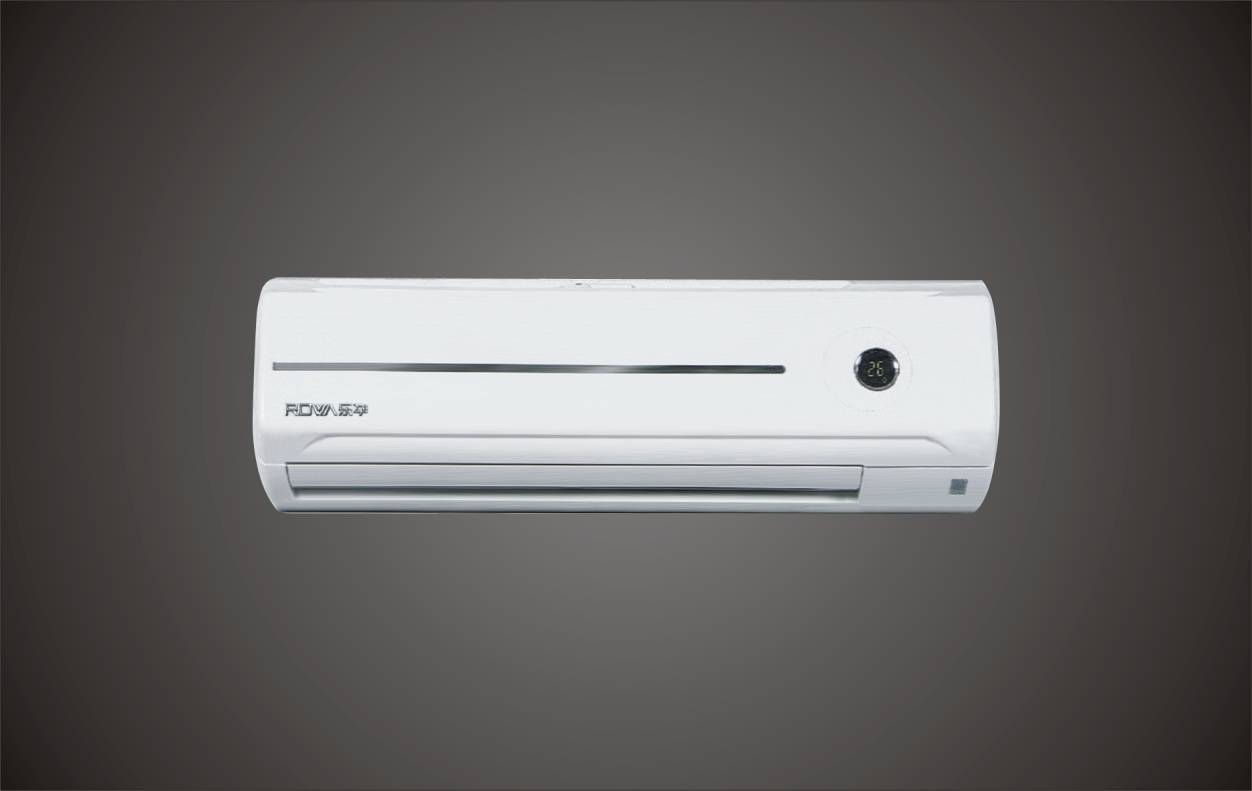
The most common refrigerant gases used in air conditioning systems include hydrofluorocarbons or HFCs such as R-410A, chlorofluorocarbons or CFCs such as R-22 and hydrocarbons such as R-290. This gas actually absorbs heat from the room and passes to the next component for further processing, which…
Compressor
As the name implies, the gaseous refrigerant is compressed here. It is located in the outdoor unit, i.e. in the part that is installed outside the house.
Condenser
The condenser absorbs the evaporated refrigerant from the compressor, converts it back into a liquid and expels the heat to the outside. Of course, it is also located on the outside unit of the split AC.
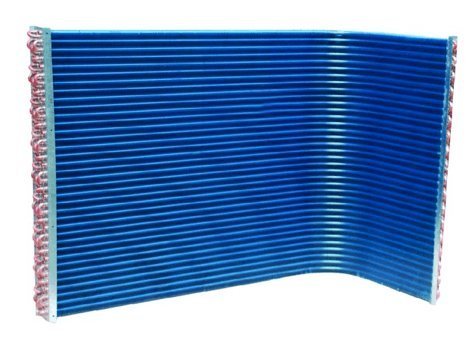
Expansion Valve
The expansion valve, also known as a throttle device, is located between the two coils, the cooling coils of the evaporator and the hot coils of the condenser. It controls the amount of refrigerant moving towards the evaporator.
Note that in the case of window ACs, the three components mentioned above are all located in a small metal box installed in a window opening.
These are the main components of an air conditioner. Let’s look at how they work together to make an air conditioner do what it does.
Also Read: What Happens To The Refrigerant When ACs Are Turned Off?
AC Operating Principle Of The Air Conditioner
An air conditioner collects hot air from a particular room, processes it into itself with the help of a refrigerant and a series of coils, and then releases cool air into the same room where the hot air was originally collected. This is basically how all air conditioners work.
Debunking The Myth
Many people believe that an air conditioner, with the help of machines installed in it, generates cooled air, which can cool a room so quickly. This might also explain why it consumes so much electricity. In reality, however, this is a mistake. An air conditioner is not a magical device; it only uses some physical and chemical phenomena very effectively to cool a particular room.
What Happens When You Turn On The Air Conditioning?
When you turn on an air conditioner and set the desired temperature, say 20 degrees Celsius, the thermostat installed in it will detect that there is a difference between the temperature of the room air and the temperature you have chosen.
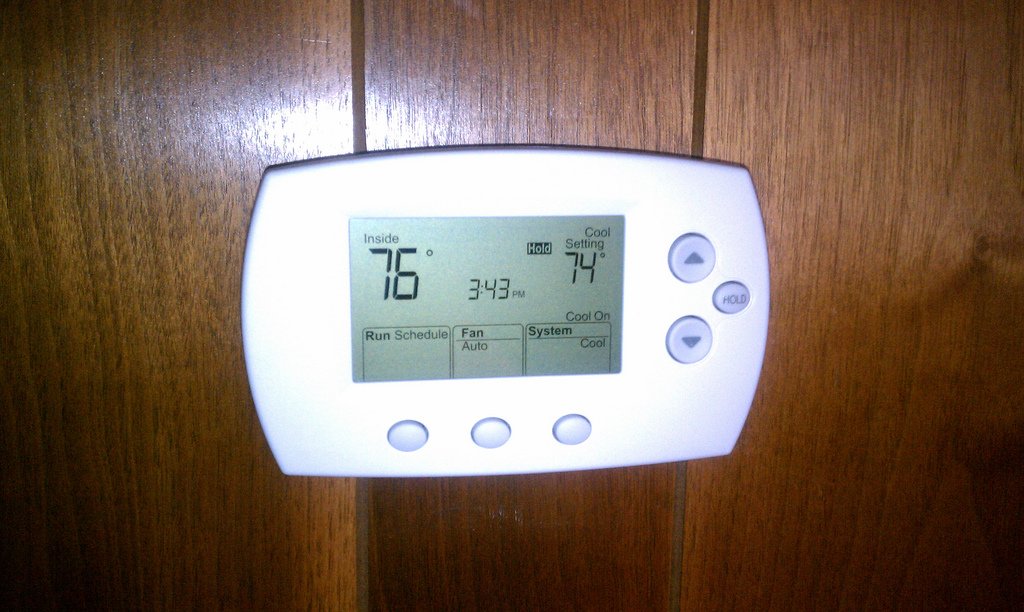
This warm air is sucked in through a grill at the bottom of the indoor unit, which then flows through some pipes through which the refrigerant, i.e. a coolant, flows. The refrigerant fluid absorbs the heat and itself becomes a hot gas. Thus, heat is removed from the air that falls on the evaporator coils. Note that the evaporator coil not only absorbs heat, but also flushes moisture out of the incoming air, which helps to dehumidify the room.
This hot refrigerant gas is then passed on to the compressor located on the outside unit. True to its name, the compressor compresses the gas so that it becomes hot as the compression of a gas increases its temperature.
This hot high-pressure gas then reaches the third component – the condenser. Here, too, the condenser stays true to its name and condenses the hot gas into a liquid.
The refrigerant enters the condenser as a hot gas but quickly becomes a cooler liquid because the heat from the “hot gas” is dissipated into the environment through metal fins. As a result, the refrigerant loses its heat as it leaves the condenser and becomes a cooler liquid. This flows through an expansion valve – a tiny hole in the system’s copper tube – which controls the flow of the cool liquid refrigerant into the evaporator, so that the refrigerant arrives at the point where its journey began.
Here is a simplified diagram of the process:

Although all components involved in the air conditioning process in window ACs are in the same metal box, the underlying cooling process remains exactly the same.
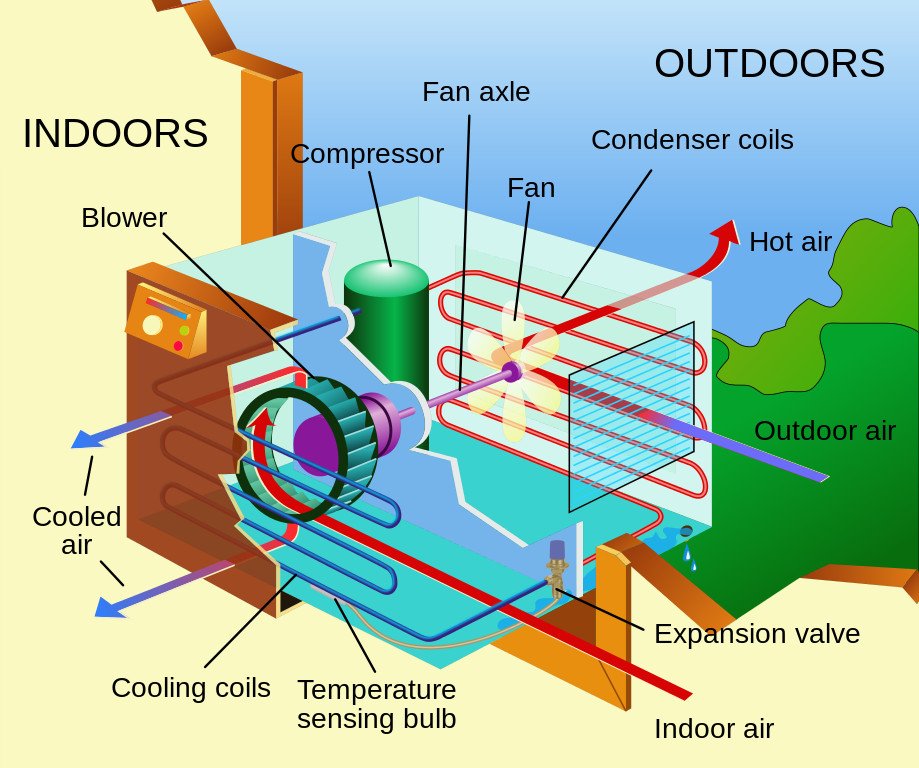
The whole process repeats itself again and again until the desired temperature is reached. In short, an air conditioner sucks in warm air, again and again, cools it and pushes it back into the room until there is no warm air left to cool down.
As dependent as we may be on air conditioning, it is surprising that it was not originally designed for human comfort. The motivation for the first modern air conditioning system was to eliminate certain problems in a publisher’s production processes! To believe that a machine that was supposed to support the publication of newspapers on a large scale could one day become an integral part of every modern household is something, isn’t it?
Also Read: How Does A Refrigerator Work?
Do you really know how an air conditioner (AC) works?

